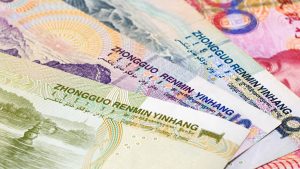AidData recently published a very comprehensive dataset on Chinese lending over the last two decades, with a focus on how capital flows have evolved under the Belt and Road Initiative (BRI). The main findings are not surprising: non-concessional financing of infrastructure projects has seen a big increase under BRI, with China’s state-owned commercial banks stepping up alongside more traditional development banks to fund large projects all around the world. The energy, transportation, and industrial sectors have received the bulk of this financing, continuing a trend that predated BRI.
The dataset contains lots of great information for data-combers to pore over, including insights into China’s financial ties with Southeast Asia. Out of the 50 largest loans made under BRI to date, Southeast Asia accounts for only three of them: $4.87 billion to Malaysia, $3.63 billion to Laos, and $2.38 billion to Indonesia. All three are funding controversial rail projects and while these are big numbers they aren’t huge in relation to GDP (except in the case of Laos which has its own special set of BRI-related problems).
Also interesting is how countries in in the region have responded in different ways to the opportunities and challenges posed by BRI. The weighted average of annualized financial commitments to Indonesia, for instance, surged from $1.8 billion in the pre-BRI era to $6.4 billion after, reflecting the fact that BRI came along at a time when Indonesia was actively looking for funding for big infrastructure projects.
But other economies, like Thailand and Vietnam, have actually seen annualized financial commitments drop since they signed BRI commitments. In Malaysia, the report identifies six BRI-financed projects that are currently underway with total liabilities of $8.38 billion. But Malaysia also represents the single largest repudiator of BRI debt, having cancelled or suspended $11.6 billion worth of projects. This shows that countries at the receiving end of BRI lending are not without agency, and there is important variation in the way they are engaging with these capital flows.
We should thus be careful in trying to graft grand narratives of “debt trap diplomacy” onto individual countries. While it’s obviously true that China has ramped up overseas lending, the details of how these capital flows are being intermediated in each country makes all the difference. Some are being channeled into productive investment, and some are not. Some countries over-borrowed, some did not. Some deals are bad, some are not. And this ties into AidData’s other major finding, which is about “hidden debt.”
The report notes that under BRI, Chinese lenders have increasingly been making deals with state-owned companies, or other hybrid public-private entities. This does not typically show up as official sovereign debt guaranteed by the state, and the murky nature of these deals makes it unclear what will happen in a default. Who will eat the losses, the borrower or the lender? Will states feel compelled to bail out defaulters in critical industries, and what happens to the underlying physical assets such as ports, railways, and power plants? Because the answers to these questions are unclear, the report has chosen to characterize this debt as “hidden” since we don’t know the extent of the state’s liability if a project becomes insolvent.
Conceptualizing debt in this way can lead to somewhat misleading conclusions, such as the claim that Indonesia has $17.28 billion in hidden debt to China, approximately 2 percent of its GDP. But this debt isn’t actually hidden, you just need to know where to look for it. It may not show up on the government’s balance sheet, but it should still show up in the financial account as a liability being incurred on the country’s balance of payments.
More importantly, though, this kind of fuzzy debt is neither new nor unique to Chinese development financing. Many other countries, including the United States, have been financing infrastructure in Southeast Asia for decades with deals that obfuscate the precise role of the state and its responsibility for guaranteeing loans and de-risking investments. As just one example in the wake of the Asian Financial Crisis, Indonesia’s state-owned electric utility PLN was unable to meet many of its contractual obligations to the foreign energy companies that had been developing power plants.
Legal challenges were brought, with U.S. claimants essentially demanding the Indonesian government cover the losses, even though in many cases there was no explicit government guarantee in place. Years of politically sensitive legal wrangling followed (and PLN was eventually ordered to pay hundreds of millions of dollars), but the point is that this kind of “hidden” debt is not new and it’s not really hidden – it’s just that it’s always been more convenient for everyone involved to ignore the implications of these arrangements unless and until a major default occurs.
In my opinion, the uneven allocation of risk between states, developers and lenders in these types of public-private infrastructure projects is not really a BRI issue. It’s a deeper systemic issue related to how foreign investment and infrastructure financing in emerging economies is structured in general. There is a power imbalance baked into these deals that typically puts emerging market borrowers on the back foot – and that is true whether the deal is being financed by Chinese, U.S., or any other kind of foreign capital.

































